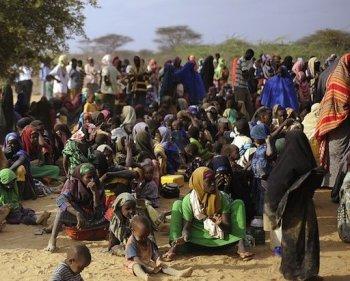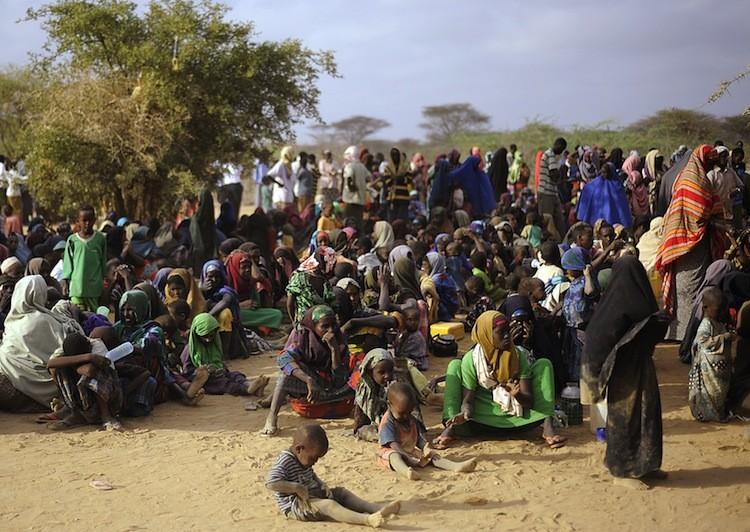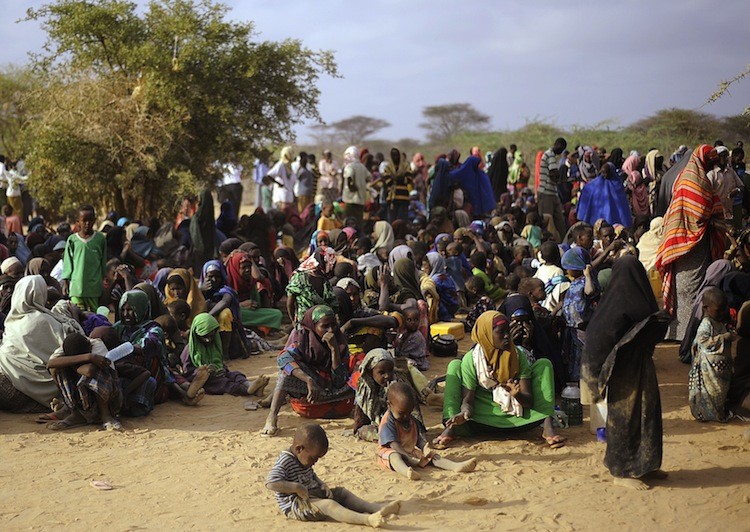Somali Famine Spreads to Three New Areas
The United Nations announced on Wednesday that famine has now spread to three new areas in southern Somalia. Two regions in southern Somalia had already been declared a famine zone on July 20.

Somali refugees line-up to be registered to receive aid after having been displaced from their homes in southern Somalia by a famine that is ravaging the horn of Africa, on August 2, at Dagahaley refugee site. Tony Karumba/Getty Images
|Updated:





